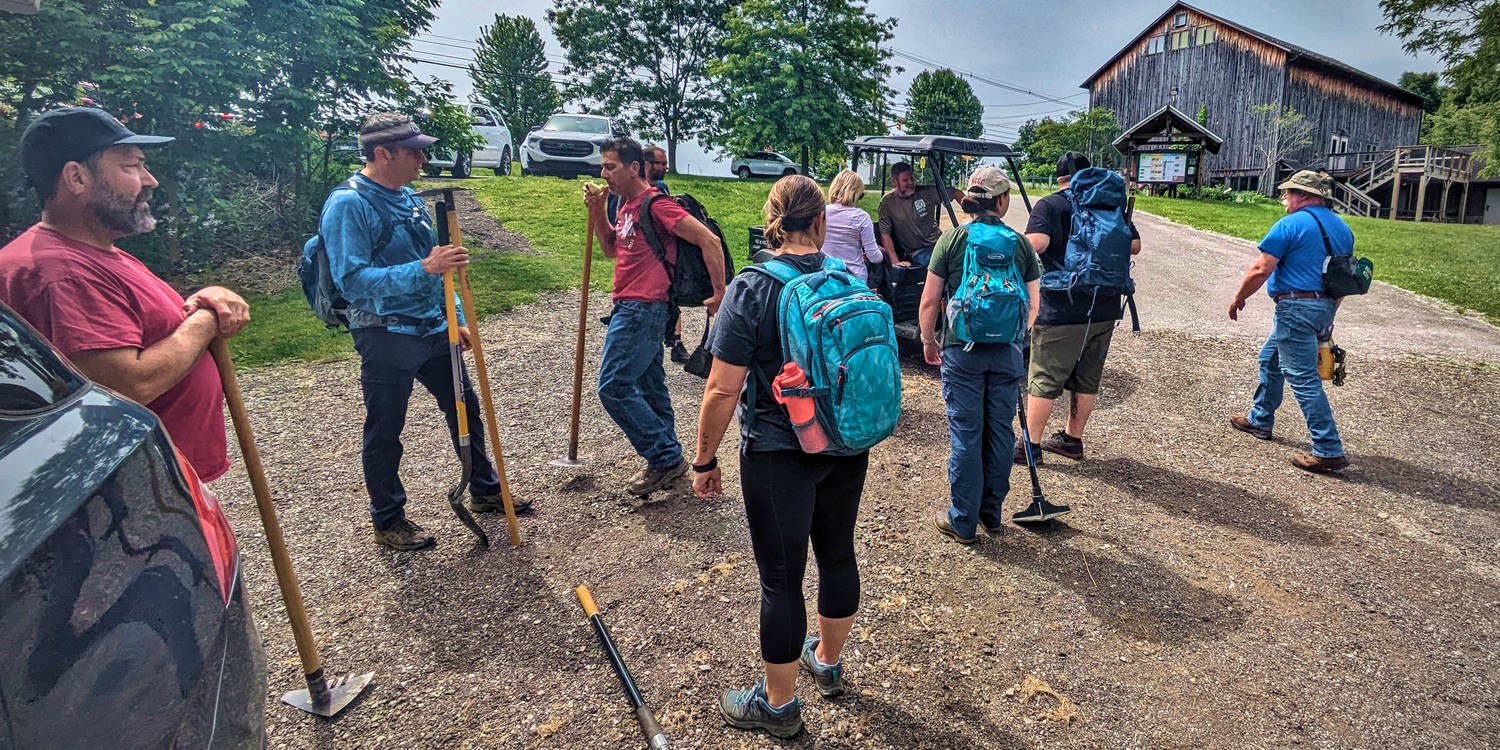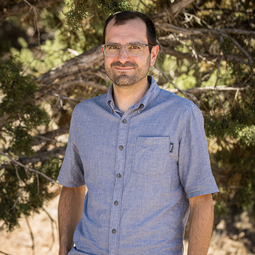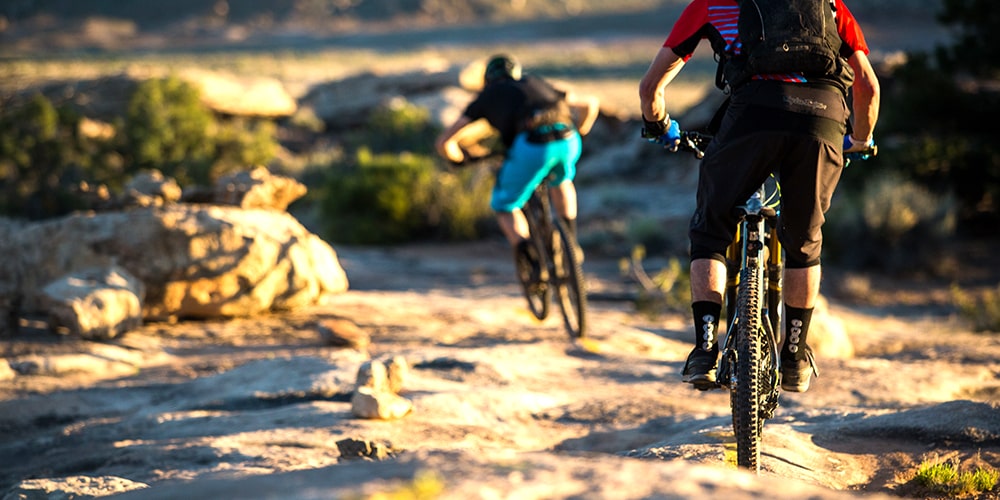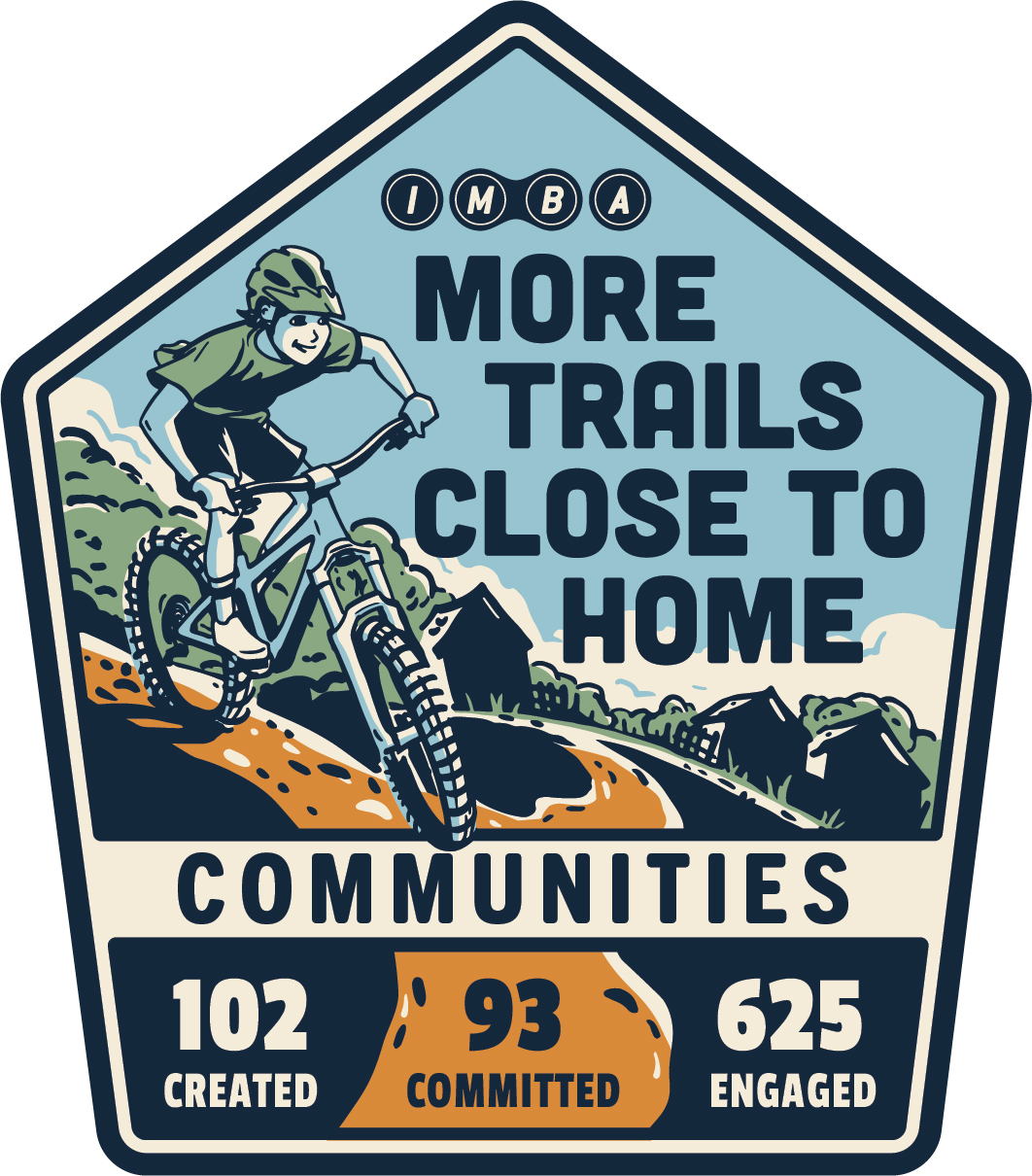Authors of Trail Development Guide Share More
Plan and Adapt
Building and riding trails forces us to adapt to local conditions, and sometimes a great plan needs fine tuning. IMBA Trail Solutions Co-Founder Joey Klein tailored the Trail Care School (TCS) for Erie based on the local trails and looming weather forecast, resulting in a novel take on the program. This wasn’t his first time pivoting – Joey has encountered it all during his quarter century doing trail work.
IMBA Trail Care School is the on-demand program that gives community members the knowledge, tools and resources to assess and manage their local trails. Topics include identifying problem areas and potential risks, creating a maintenance plan, and learning proper techniques to maintain and improve trails. Schedule a TCS workshop here.
We started with an interactive classroom session to prepare attendees with fundamental knowledge before heading into the field. Joey and our hosts at Asbury Woods had scouted the trails and discussed a long-term vision for the property. This weekend included National Trails Day, the annual day of service for hometown trails and the people who love them!
Meet The Teacher
Joey Klein needs no introduction in trail building circles. Joey is IMBA’s longest tenured employee, an early Trail Care Crew member and current Community Engagement Specialist. Klein has helped communities in 15 countries and 45 US states work toward more or better trails for riders and all users.
TCS participants convened at Asbury Woods (https://www.asburywoods.org/) in Erie, PA near the southern shore of Lake Erie. The nature preserve sits on 234 acres inclusive of old-growth forest, trails, gardens, a nature center, and educational programming. The classroom included a variety of types of trail users; some were volunteers and others professional Asbury Woods staff. Each individual had their own connection to trails, and everyone agreed the importance of trails to the community.
Foundations
Joey took the group through foundational components of successful trails. Textbook definitions and processes coupled with real examples of completed trail projects illustrated the concepts in a visual, tangible way.
Nearby Jakes Rocks MTB Trails in Warren, PA (planned and designed by IMBA Trail Solutions) was among the examples. These trails are beloved by the mountain bikers in the room. For some, Jakes was their first exposure to a modern, shared-use trail system with single-use areas and directional trails, all joined by hub intersections. It’s a different approach than traditional trails, and this style of trail lends a unique experience for trail users and land managers alike.
Other trail system examples, like Corner Canyon Trails in Draper, UT, are close to neighborhoods and population centers. Their location makes it easy for hikers, mountain bikers, horseback riders and dog walkers to enjoy time outside, and allows kids to ride directly to NICA practice from home. Trail systems like this embody more trails close to home!
Keys to a successful trail project:
- Consider the land manager’s mission, goals and mandates
- Plan, plan, plan
- Consider all users and their desired experiences
- Develop resilient and sustainable trails to ease the maintenance burden
- Deliver multiple benefits to the community
Joey emphasized two priorities in every trail project: keep users on the trail and get water off! We discussed rolling contour trail designs that support these priorities. This technique was described as “making a trail dance and sing” by utilizing the right combination of inslope, outslope and grade reversals to net more sustainable trails and a fun user experience. But how to do that out in the field? The right slope is the key. Thus, it was time for clinometer (“clino”) lessons. Attendees got familiar with using the tool to measure grade, which is indispensable for building sustainable trails.
The classroom session closed with a piece of advice: assume that those who built the trail before did their best with what tools and knowledge they had. Techniques have changed, and some of the good ideas of the past didn’t work out as intended. No matter, that led to more effective techniques in use today.
Take it to the Trails
After the classroom session we headed into the field. We kicked off with a requisite safety briefing, and moved on to potential projects. Before moving any dirt we discussed projects to tackle, emphasizing those that fit the long term vision for Asbury Woods without significant trail closures.
For example the team walked a chronically wet section of trail, discussing a variety of remediation and closure options. Ultimately, this area would be a project for another day. That covered, the group moved on to some more tenable projects.
We identified some issues that could be solved that afternoon. Splitting into groups, we focused on addressing a number of wet spots on the main trail and closing redundant social trails. Some areas needed soil removed and others added, to aid drainage. Teams coordinated and made sure material was moved and used in a coordinated fashion. Creating rises and dips in one area, adding a knick (drain) to another section, and filling in another low spot with soil from the knick, material and energy was used efficiently. Groups checked in with one another, measuring their work with clinometers and discussing progress. Through close collaboration the team made significant progress. The freshly tamped soil got a thin blanket of leaves to protect it from the incoming rain, and we left the field for the day.
Inspections and Reflections
On Sunday morning, we reconvened in the classroom and discussed challenges from the day before. Joey shared examples from different ecosystems. The day’s session delved deeper into addressing water and grades, plus how to work around trees and hazards. Rock work – including armoring and pitching – comprised a significant part of the discussion, and Joey’s excitement for the techniques was tempered with a strong reminder that these should often be considered a last option. If a different, more sustainable route won’t require moving a bunch of stone or extensive construction and maintenance, that could be the way to go. Of course local conditions, available materials, and the capabilities of volunteers and managers all factor into decision making.
With morning rain and the classroom session both winding down, the group got back to the trail. With clinos in hand the team noted the effects of rain on yesterday’s efforts and assessed potential future projects.
As a final exercise, the group reflected on what they’d learned: There was a realization that they’d tackled some less obvious problems yet still made a visible difference. The group laughed at the difference between what felt like enough slope versus what clino measurements established as fact. Some closing thoughts acknowledged the importance of planning and preparation – to use space, time, material and human power to its full potential. The group was empowered and energized to continue making progress and it will be exciting to see future impacts.
Joey assigned homework to the class: sample some of the trails that IMBA had a hand in planning, designing, or building. Naturally, I detoured for a ride at Jakes Rocks on my way home. The trails are seriously well done and feature fun riding for many skill levels. It was a helpful end to the weekend to see more TCS topics applied. What a great weekend dedicated to trails!










